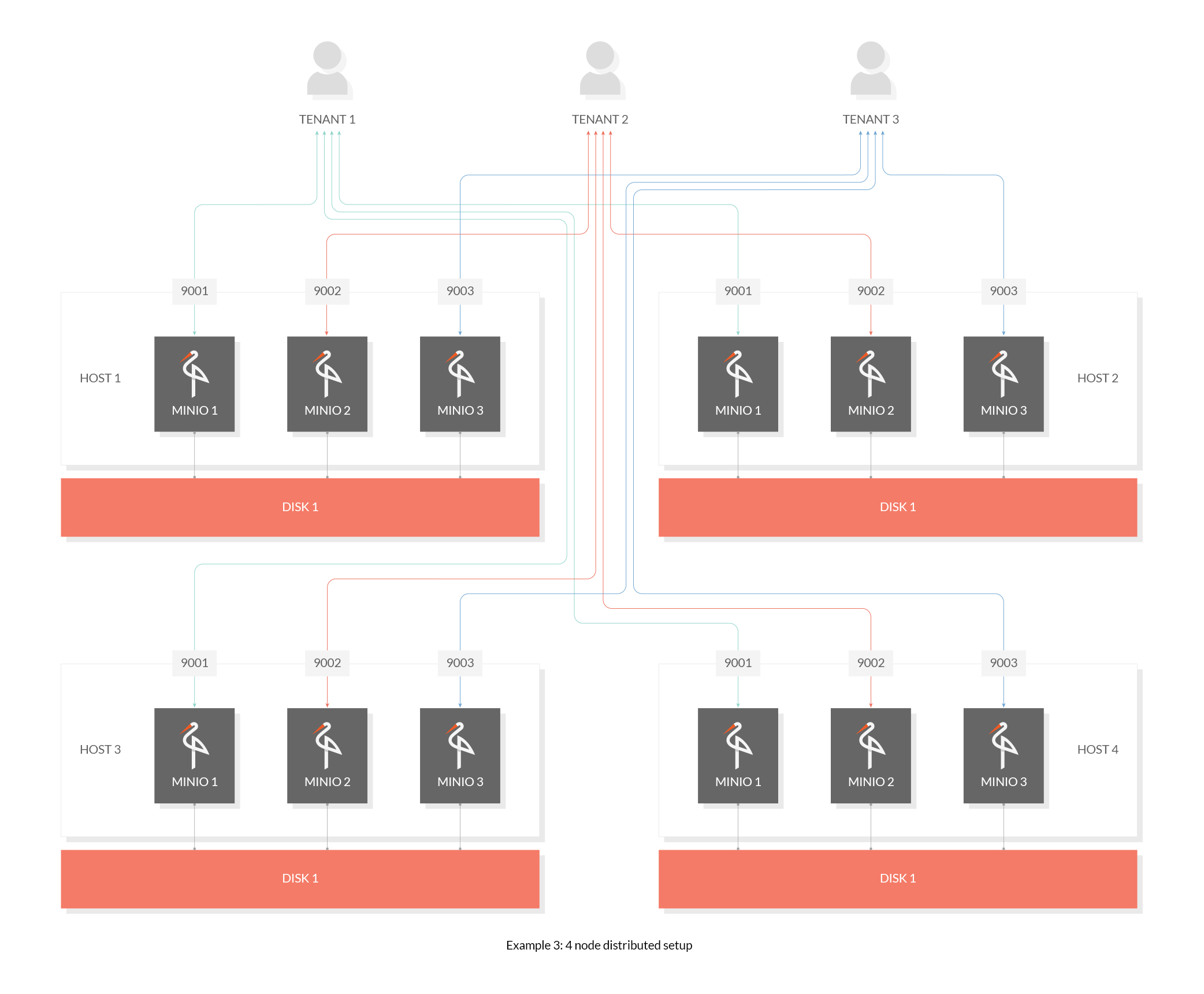- Sort Score
- Result 10 results
- Languages All
Results 1 - 10 of 10 for define (0.33 sec)
-
docs/config/README.md
``` KEY: storage_class define object level redundancy ARGS: standard (string) set the parity count for default standard storage class e.g. "EC:4" rrs (string) set the parity count for reduced redundancy storage class e.g. "EC:2" comment (sentence) optionally add a comment to this setting ``` or environment variables ``` KEY: storage_class define object level redundancy ARGS:
Plain Text - Registered: Sun May 05 19:28:20 GMT 2024 - Last Modified: Mon Sep 11 21:48:54 GMT 2023 - 17.7K bytes - Viewed (0) -
docs/erasure/storage-class/README.md
## Overview MinIO supports two storage classes, Reduced Redundancy class and Standard class. These classes can be defined using environment variables set before starting MinIO server. After the data and parity drives for each storage class are defined using environment variables, you can set the storage class of an object via request metadata field `x-amz-storage-class`. MinIO server then honors the storage class by
Plain Text - Registered: Sun May 05 19:28:20 GMT 2024 - Last Modified: Tue Aug 15 23:04:20 GMT 2023 - 5.8K bytes - Viewed (1) -
docs/ftp/README.md
- Secure File Transfer Protocol (SFTP) – Defined by the Internet Engineering Task Force (IETF) as an extended version of SSH 2.0, allowing file transfer over SSH and for use with Transport Layer Security (TLS) and VPN applications. - File Transfer Protocol over SSL/TLS (FTPS) – Encrypted FTP communication via TLS certificates. - File Transfer Protocol (FTP) – Defined by RFC114 originally, and replaced by RFC765 and RFC959
Plain Text - Registered: Sun May 05 19:28:20 GMT 2024 - Last Modified: Tue Apr 30 15:15:45 GMT 2024 - 7.1K bytes - Viewed (0) -
docs/multi-tenancy/README.md
``` **Note:** Execute the commands on all 4 nodes. 
Plain Text - Registered: Sun May 05 19:28:20 GMT 2024 - Last Modified: Thu Sep 29 04:28:45 GMT 2022 - 3K bytes - Viewed (0) -
docs/sts/README.md
Following are advantages for using temporary credentials: - Eliminates the need to embed long-term credentials with an application. - Eliminates the need to provide access to buckets and objects without having to define static credentials. - Temporary credentials have a limited lifetime, there is no need to rotate them or explicitly revoke them. Expired temporary credentials cannot be reused. ## Identity Federation
Plain Text - Registered: Sun May 05 19:28:20 GMT 2024 - Last Modified: Tue Oct 25 00:44:15 GMT 2022 - 7.8K bytes - Viewed (1) -
docs/bucket/lifecycle/README.md
To transition objects in a bucket to a destination bucket on a different cluster, applications need to specify a transition tier defined on MinIO instead of storage class while setting up the ILM lifecycle rule. > To create a transition tier for transitioning objects to a prefix `testprefix` in `azurebucket` on Azure blob using `mc`: ```
Plain Text - Registered: Sun May 05 19:28:20 GMT 2024 - Last Modified: Sat Aug 26 07:33:25 GMT 2023 - 9K bytes - Viewed (1) -
docs/security/README.md
2) Decrypt encrypted object key with the KEK derived from the data key. 3a) Receive new plain data key from the KMS using the master key ID of the server config. 3b) Receive encrypted form of the data key from the KMS. 4) Derive a new KEK from the new data key and re-encrypt the OEK with it. 5) Store the encrypted OEK encrypted data key and master key ID in object metadata. ```
Plain Text - Registered: Sun May 05 19:28:20 GMT 2024 - Last Modified: Sat Feb 12 00:51:25 GMT 2022 - 13.8K bytes - Viewed (0) -
docs/multi-user/admin/README.md
mc admin user add myminio-admin1 user1 user123 mc admin policy attach myminio-admin1 user1policy ~/user1policy.json mc admin policy attach myminio-admin1 user1policy --user=user1 ``` ### 4. List of permissions defined for admin operations #### Config management permissions - admin:ConfigUpdate #### User management permissions - admin:CreateUser - admin:DeleteUser - admin:ListUsers - admin:EnableUser
Plain Text - Registered: Sun May 05 19:28:20 GMT 2024 - Last Modified: Tue Mar 21 06:38:06 GMT 2023 - 4.5K bytes - Viewed (0) -
docs/compression/README.md
```bash ~ mc admin config set myminio compression enable="on" extensions="" mime_types="" ``` The compression settings may also be set through environment variables. When set, environment variables override the defined `compress` config settings in the server config. ```bash export MINIO_COMPRESSION_ENABLE="on" export MINIO_COMPRESSION_EXTENSIONS=".txt,.log,.csv,.json,.tar,.xml,.bin"
Plain Text - Registered: Sun May 05 19:28:20 GMT 2024 - Last Modified: Mon Mar 11 11:55:34 GMT 2024 - 5.1K bytes - Viewed (0) -
docs/distributed/README.md
- Servers running distributed MinIO instances should be less than 15 minutes apart. You can enable [NTP](http://www.ntp.org/) service as a best practice to ensure same times across servers. - `MINIO_DOMAIN` environment variable should be defined and exported for bucket DNS style support. - Running Distributed MinIO on **Windows** operating system is considered **experimental**. Please proceed with caution.
Plain Text - Registered: Sun May 05 19:28:20 GMT 2024 - Last Modified: Thu Jan 18 07:03:17 GMT 2024 - 8.8K bytes - Viewed (0)